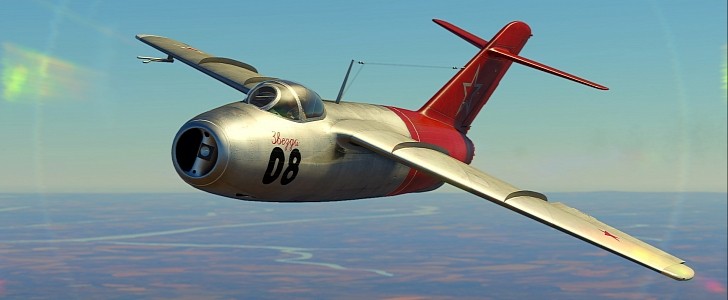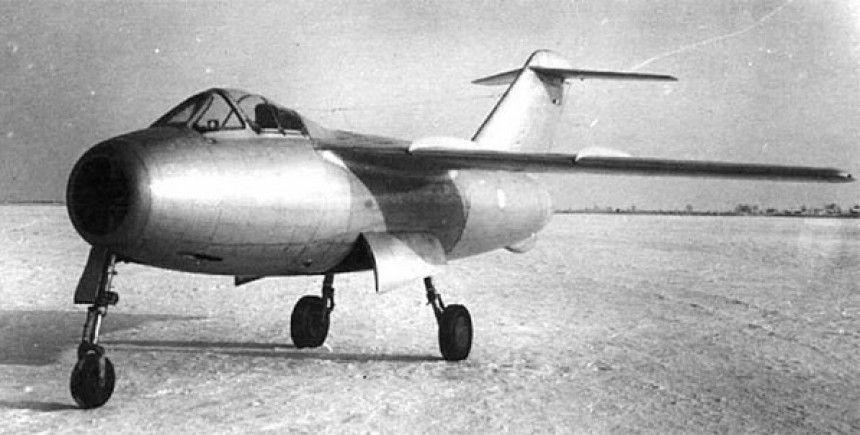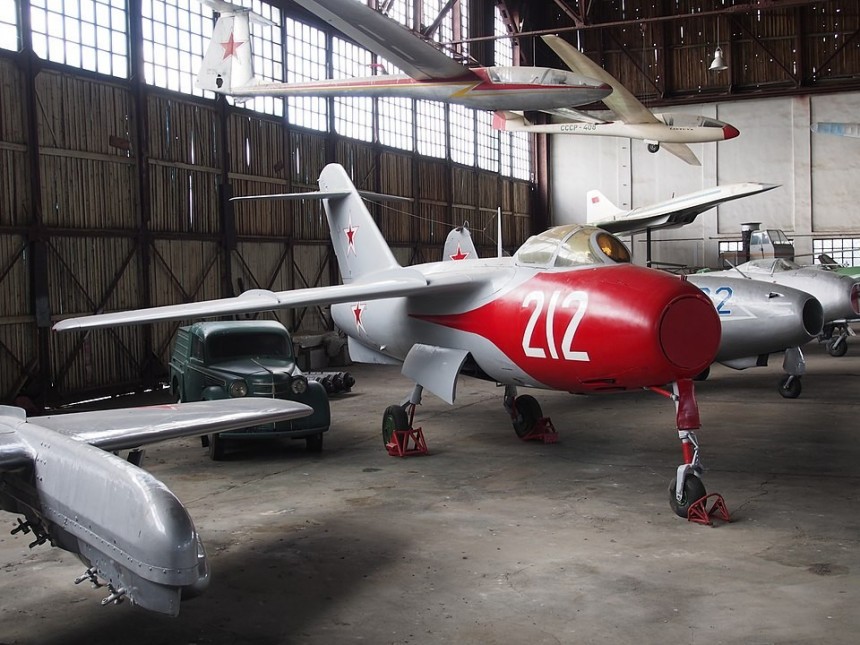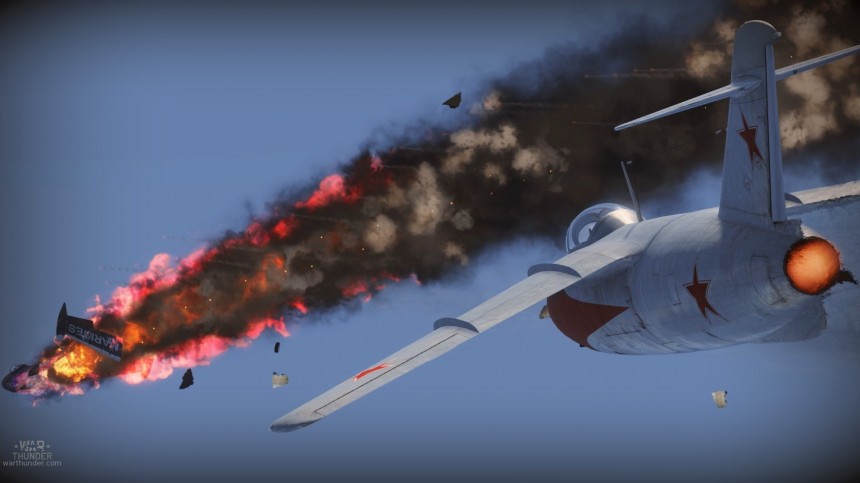When people think of early Cold War Soviet jet fighters, they think about MiGs and not much else. If modern Hollywood Korean and Vietnam War movies were taken as gospel, you'd assume MiG 15s, 17s, 19s, and 21s were the only fighters non-NATO-aligned nations ever flew.
But as modern people of culture, we know most movies aren't even faithful to the source material. In reality, Mikoyan-Gurevich was one of a plethora of Soviet design bureaus. All were controlled by the Kremlin and vied for the same lucrative Communist Party contracts. Among the fray was a company called Lavochkin. Founded just before the onset of World War II in 1937, Lavochkin was an aircraft manufacturer tried by fire.
After developing the uncannily damage-resistant but equally dreadful LaGG-3, its anemic V12 engine was removed. Once only the bare airframe was left, a Soviet copy of an American Wright Cyclone was installed. The result was called the Lavochkin La-5. If the LaGG-3 was a contemptible airplane, the La-5 was equally and oppositely magnificent. In the face of the relentless onslaught of Bf-109s and Fw-190s, the La-5 helped form the backbone of the Red Air Force.
After the war, German jet technology fell into the hands of both the Soviets and their NATO adversaries. Couple this with a particular foolhardy kind gesture by the British to lend the Communists one of their prized new jet engines. It was a particularly unexpected stroke of good fortune for Soviet military aviation contractors.
Suddenly, the Soviets had just the engine they needed to shoot down British pilots only a few years later. The most famous outcome from this walnut-brain move on the part of the Britts was the Klimov VK-1, the engine that powered the Il-28 and the MiG-15.
The MiG-15 used an engine derived from the Rolls-Royce Nene found in the De Haviland Vampire. But right alongside all of this, Lavochkin was set to enter the same competition for party contracts. The La-15 lineage began powered by a copy of the Rolls-Royce Derwent that powered, among other things, the Gloster Meteor, and under license for the U.S. Navy in early examples of the Grumman F9F Panther, as the General Electric J42.
As it happens, the copied Derwents were a part of the same friendly technology exchange under the British labor government that one can only assume left the parliament doing the late 1940s equivalent of face-palming.
The reverse-engineered Derwent engine, named the Klimov RD-500, was installed in the airframes of at least 235 Lavochkin La-15s. All were assembled at the Plant 21 "Sokol" design bureau production facility in the city of Nizhny Novgorod in Western Russia, about 1140 km from the Ukrainian border.
The first flight test of the La-15 took place on January 8th, 1948, under the prototype name Aircraft 174. Compared to previous tries at a jet fighter by Lavochkin, like the La-152 and La-160, which used breathed-on German technology to get the Soviets into the jet age, the La-15 looked positively futuristic. One airframe was even fitted with the same Rolls-Royce Nene-derived engine from the MiG-15 and dubbed the La-168.
Interestingly, the La-168 is believed to be the first Soviet airplane to break the sound barrier in a dive, although this is also attributed to another Lavochkin airplane, the La-176. This came at the horrifying cost of the canopy caving in on itself once it passed through the pressure cloud of Mach 1.
The airplane crashed, likely killing the pilot. In many respects, the La-15 was every bit as capable as its Mikoyan-Gurevich counterpart. But if there's one thing the Stalin regime hated more than NATO was needless cost overruns. Only one of these two jets was going to form the new backbone of the Red Air Force.
In the end, slightly better flight performance on the part of the La-15 was not enough to make the sheer ease of manufacturing and durability of the MiG-15. Though a handful of Lavochkins was tested in combat conditions, the details of this combat are not entirely known. What is known is that by the cease-fire of the Korean War in 1953, many La-15s were cannibalized for their engines.
They'd go on to be used in the Raduga KS-1 Komet, one of the first Soviet air-to-air missiles. From then on, the La-15 faded into obscurity. With only a handful of surviving airframes parked in museums across the former Soviet Union. That was until April 14th, 2014, when Gaijin Entertainment brought Update 1.39 to their free-to-play masterpiece, War Thunder.
Included in this update pack was the La-15. With surprising low-speed maneuverability and three hard-hitting 23mm Nudelman-Suranov NS-23 cannons, this is a jet that still gets a fair level of flight time even eight years later.
After developing the uncannily damage-resistant but equally dreadful LaGG-3, its anemic V12 engine was removed. Once only the bare airframe was left, a Soviet copy of an American Wright Cyclone was installed. The result was called the Lavochkin La-5. If the LaGG-3 was a contemptible airplane, the La-5 was equally and oppositely magnificent. In the face of the relentless onslaught of Bf-109s and Fw-190s, the La-5 helped form the backbone of the Red Air Force.
After the war, German jet technology fell into the hands of both the Soviets and their NATO adversaries. Couple this with a particular foolhardy kind gesture by the British to lend the Communists one of their prized new jet engines. It was a particularly unexpected stroke of good fortune for Soviet military aviation contractors.
Suddenly, the Soviets had just the engine they needed to shoot down British pilots only a few years later. The most famous outcome from this walnut-brain move on the part of the Britts was the Klimov VK-1, the engine that powered the Il-28 and the MiG-15.
As it happens, the copied Derwents were a part of the same friendly technology exchange under the British labor government that one can only assume left the parliament doing the late 1940s equivalent of face-palming.
The reverse-engineered Derwent engine, named the Klimov RD-500, was installed in the airframes of at least 235 Lavochkin La-15s. All were assembled at the Plant 21 "Sokol" design bureau production facility in the city of Nizhny Novgorod in Western Russia, about 1140 km from the Ukrainian border.
The first flight test of the La-15 took place on January 8th, 1948, under the prototype name Aircraft 174. Compared to previous tries at a jet fighter by Lavochkin, like the La-152 and La-160, which used breathed-on German technology to get the Soviets into the jet age, the La-15 looked positively futuristic. One airframe was even fitted with the same Rolls-Royce Nene-derived engine from the MiG-15 and dubbed the La-168.
The airplane crashed, likely killing the pilot. In many respects, the La-15 was every bit as capable as its Mikoyan-Gurevich counterpart. But if there's one thing the Stalin regime hated more than NATO was needless cost overruns. Only one of these two jets was going to form the new backbone of the Red Air Force.
In the end, slightly better flight performance on the part of the La-15 was not enough to make the sheer ease of manufacturing and durability of the MiG-15. Though a handful of Lavochkins was tested in combat conditions, the details of this combat are not entirely known. What is known is that by the cease-fire of the Korean War in 1953, many La-15s were cannibalized for their engines.
They'd go on to be used in the Raduga KS-1 Komet, one of the first Soviet air-to-air missiles. From then on, the La-15 faded into obscurity. With only a handful of surviving airframes parked in museums across the former Soviet Union. That was until April 14th, 2014, when Gaijin Entertainment brought Update 1.39 to their free-to-play masterpiece, War Thunder.
















